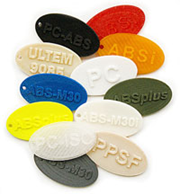THE BEST CHOICE FOR 3D PRINTING

Why ABS is a Good Choice for 3D Printing and When to use Another Thermoplastic
The majority of today’s consumer products — and many commercial ones — are composed of thermoplastics. When designing a new product, engineers can best predict its end performance by prototyping with a material as similar to it as possible. That’s why 3D printing with thermoplastics is so widely practiced. Using Fused Deposition Modeling (FDM) machines, engineers have the option of making parts with the most commonly used thermoplastics, such as ABS, polycarbonate, a variety of blends, as well as engineered thermoplastics for aerospace, medical, automotive, electronic and other specialty applications. When using 3D printing for the production of finished goods, using a thermoplastic is all the more important, and it may be the only choice for many applications.
Materials characterize manufacturing processes. In turn, manufacturing processes influence the material properties of the final product. Additive manufacturing is no different. The technologies are identified by the materials they use, and the quality of the output is controlled by the processing methods. In the case of FDM, the materials are industrial grade thermoplastics and include some high-performance engineered thermoplastics.
Additive manufacturing uses a layer-based process to convert computer models into plastic parts. Direct from computer-aided design (CAD) files, automated machines add layer-after-layer of material, which makes very complex parts easy to produce. The FDM process creates functional parts by extruding and depositing the materials. Using the same types of raw materials found in injection molding facilities around the globe, FDM makes plastic parts with properties suited for applications from concept modeling through product development and manufacturing. As with molded parts, there are a variety of material options; each with unique characteristics designed to meet the application needs.



